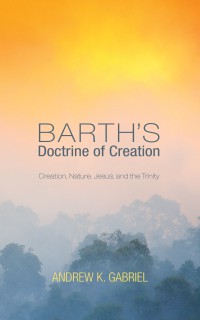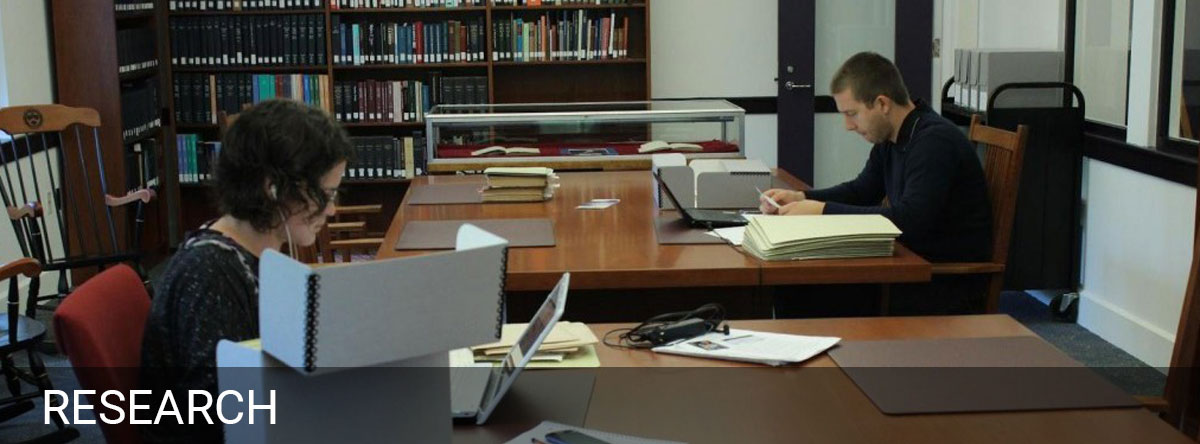 Gabriel, Andrew K. Barth’s Doctrine of Creation: Creation, Nature, Jesus, and the Trinity (Eugene, OR: Cascade Books, 2014), x + 118 pp. $18.00 (Paperback)
Gabriel, Andrew K. Barth’s Doctrine of Creation: Creation, Nature, Jesus, and the Trinity (Eugene, OR: Cascade Books, 2014), x + 118 pp. $18.00 (Paperback)
Reviewed by Ximian Xu (November 27, 2018)
In this short work, Andrew Gabriel—Assistant Professor of Theology at Horizon College and Seminary—aims to use Barth’s doctrine of creation to address the seeming irrelevance of the doctrine of the Trinity to the doctrine of creation, a trend which gradually developed in the post-Reformation era and the nineteenth century. Gabriel argues that Barth is intent on articulating the doctrine of creation from the standpoint of the “God who is revealed in Jesus Christ” (2-3). Rather than adopting a comparative study, Gabriel delves into Barth’s doctrine of creation itself, particularly as outlined in Church Dogmatics III/1.In chapter two, Gabriel traces the contours of Barth’s doctrine of creation, arguing, “for Barth, knowledge of creation is an article of faith. From this article of faith believers learn of the free and loving Creator who has created the world out of nothing for the covenant. This covenantal relationship leads Barth to affirm that creation is distinct from God and that creation is good” (8). Based on this summary, Gabriel observes that for Barth creation refers both to “the first originating work” and to non-historical history (8-10). Hence, it is faith that leads one to confess God’s creation in the beginning. This means that the doctrine of creation should be Christologically articulated within the teaching of the Church rather than through philosophical or scientific reasoning. God’s self-witness is the foundation of the doctrine of creation. As such, the doctrine of creation is an article of faith, which is found true in the revelation of Jesus Christ (14). Consequently, Barth emphatically repudiates natural theology and insists that “[t]he revelation of salvation and creation belong together” (21). Creation cannot be known or understood apart from the event of redemption.
Gabriel goes on to point out that for Barth, the doctrine of creation is first and foremost the doctrine of the Creator who, in freedom and love, created the world from nothing. This means, first, that God needs creation neither intrinsically nor extrinsically. Second, God, in freedom, has always had loving intentions toward creation. Third, it is God who summons all things into existence as God calls humanity into a new life in resurrection (21-30). In light of this threefold meaning of the doctrine of the Creator, Barth thinks the covenantal relationship between God and human beings is the goal of creation on the grounds that God is both Creator and Savior (30-38). Moreover, given that God’s purpose is to create a covenantal partner external to Himself, creation is both good and distinct from God. “Creation is good because the benevolent God is its Creator and creates with purpose and direction” (39). In short, creation is justified by Jesus Christ who fulfils the divine-human covenant.
After setting out the contours of Barth’s doctrine of creation, Gabriel then examines three pertinent critiques of Barth’s theology. In the third chapter, Gabriel wrestles with the critique of Barth’s view of creation as anthropocentric. For Gabriel, there are five factors leading to this critique, which all result from the misunderstanding that Barth severs nature from God or neglects nature completely (51-56). For example, Barth argues that “creation is the external basis of the covenant and the covenant is the internal basis of creation” (51). Critics estimate that Barth subordinates creation to covenant in such a way that creation is no longer important. For another instance, some scholars argue that Barth considers human beings the only created partner in the divine-human covenant. As such, the rest of creatures are divorced from God. In response, Gabriel maintains that not only does Barth argue for the participation of nature in the covenant but Barth also stresses ordered creatureliness, which includes a right relationship of humanity with nature (57-60). From this perspective, it follows that although Barth’s theological concern for nature is underdeveloped, “the whole of creation is that which God wanted, and is therefore good, and that all of creation participates in the covenant” (64).
Chapter four describes Barth’s trinitarian understanding of the doctrine of creation. Gabriel begins with the refutation of four critiques (67-73). First, Gabriel argues that rather than identifying the imago dei as a quality in the human being, Barth uses the male-female relation as an analogy to account for the truth that humans are created relational beings and the truth that the Triune God is a relational being. Second, Gabriel maintains that God, who is closely related to humans in Jesus Christ, is not spatially but ontologically distant from the world. This denotes God’s presence in creation. Third, Gabriel contends that while speaking of the relationship between God and creation, Barth is not a modalist who safeguards the unity of God at the expense of Trinity. Fourth, he points out that Barth does not entirely ignore the work of the Holy Spirit in creation. Following the rejection of the four critiques is Gabriel’s elaboration on the creative work of the Father, the Son, and the Holy Spirit, which particularly sheds light on the refutation of the latter two critiques. By doing so, Gabriel demonstrates on the one hand that Barth’s trinitarian approach to the doctrine of creation is not modalistic since the identity of the Creator is the Triune God, and on the other hand, that the only creative work of the Holy Spirit is to glorify the intra-trinitarian fellowship (74-81). As such, Barth refrains from placing emphasis on the creative activity of the Holy Spirit. However, Gabriel insists that Barth’s trinitarian approach to the doctrine of creation can still be justified.
In chapter five, Gabriel rejects the criticism that Barth neglects the created historical reality with his preoccupation with the pre-temporal Jesus Christ. Gabriel begins by underlining the dialectic of eternity and history in Barth’s theology. This dialectic reaches its synthesis in Jesus Christ, who is a living person in history (85-90). In other words, the work of Jesus Christ, which is central to the covenant and God’s grace, is revealed and actualized in history. Gabriel proceeds by tackling the issue of the logos ensarkos, which appears to make the created human nature of Jesus Christ eternal. He maintains that Barth by no means rejects the concept of the logos asarkos but uses the term “Jesus Christ” to avoid an abstract idea (91-96). The created human nature of Jesus Christ is anticipated in eternity but actualized in history. Accordingly, Gabriel argues that, for Barth, the covenant existed before creation but the covenant is actualized in Jesus Christ in and after creation history. By consequence, Barth’s doctrine of creation is deeply concerned with historical reality of creation.
Gabriel sets forth a lucid, critical, and convincing overview of Barth’s doctrine of creation. The outline in chapter two of the contours of this doctrine is helpful, especially for those who are not familiar with Barth’s theology. Despite his basic sympathy with Barth, Gabriel critically engages Barth’s overdeveloped Christocentric tone and his underdeveloped pneumatology. These critiques will aid readers in critically exploring Barth’s doctrine of creation further. This book is recommended in light of these strengths.
Nonetheless, I disagree with Gabriel’s rejection of Oliver Crisp’s critique of Barth (34). Crisp argues that the goal of creation should be God’s self-glorification rather than the divine-human covenant as Barth claims. Gabriel contests that for Barth, God is glorified through the divine-human covenant since this covenant simply is God’s glory. In my view, there is a distinction between saying that the covenant is God’s glory and saying that God’s glory is covenant. With regard to the former, it can be understood that the divine-human covenant is one means by which God is glorified. However, the latter cannot be deduced from this insofar as God’s glory cannot be simplified to covenant. Conceptually, God’s glory is broader than God’s covenant. In other words, the divine glory is directly manifest in creation (e.g. Ps. 8:1; 19:1) but is not restrained within the confines of the divine-human covenant. Therefore, while speaking of the divine-human covenant as God’s glory, Barth actually identifies the covenant as the goal of creation. In this sense, Crisp’s critique is justified.
Moreover, chapter three, which engages with Barth’s theology of nature, can be strengthened by adding the comparison between natural theology and the theology of nature. In Barth’s “Nein! Antwort an Emil Brunner,” natural theology is defined as a theology that is not grounded in God’s revelation as witnessed by Holy Scripture. By contrast, the theology of nature generally refers to the theological understanding of nature from the perspective of Christian faith. This comparison has the potential to provide further clarifications regarding the relationship between God and nature and the place of nature in Barth’s theology. All in all, as Paul Nimmo wrote in the endorsements, “[t]he result [of Gabriel’s study] is an excellent introduction to Barth’s understanding of creation, evidencing both its doctrinal sophistication and its continuing significance” (backcover). Hence, this book is a very good companion for those who decide to investigate Barth’s doctrine of creation.
Ximian Xu, Ph.D. Student, University of Edinburgh
The views expressed here are strictly those of the author; they do not necessarily represent the views of the Center for Barth Studies or Princeton Theological Seminary.


